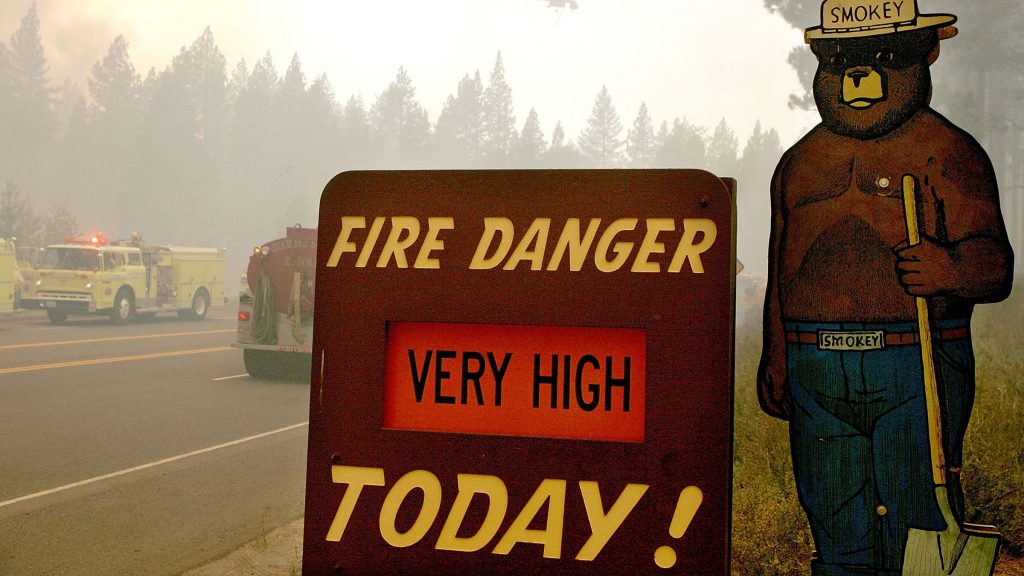It’s been hot here this summer. It’s been rainy. But the forest fires have certainly been a part of our weather system.
There are days when we can see it over Syracuse: smoke that had wafted from the forest fires in the West and turns the skies in Upstate New York hazy. Some days, you can smell the smoke. Sometimes, the late afternoon/early evening sun, like the old song says, is “shining like a red rubber ball.” These red suns are pretty spectacular, but that flaming color is caused by smoke particles.
As a kid growing up, I heard plenty from Smokey the Bear, warning us that “Only you can prevent forest fires.” (In fact, that “only you” is not quite correct. While it’s true that many fires are started by carelessly tossed matches or poorly put out campfires, there are many climate and other natural forces, like lightning strikes, at play, as well.)
Smokey the Bear wasn’t just about fire prevention. According to the lyrics to the Smokey the Bear song, Smokey was always prowlin’ and growlin’ and sniffing the air. And because of all this sniffing, “He can spot a fire before it starts to flame.”
In real life, I suspect that there have been few if any forest fires detected by cartoon bears. Historically, most forest fires were detected by rangers in lookout towers, and in our national forests these towers are still staffed. But technology is being increasingly deployed for fire-spotting. Some of the systems being used are satellite-based, or are optical solutions that search for smoke. Emerging systems are sensor and IoT based.
EE Times had a recent article that showcased a new “early warning” IoT solution. Dryad Networks, one of a number of companies with sensor-based forest fire detection systems, is bringing out a “solar-powered LoRaWAN-based sensor system for early detection.” Rather than having each base station connected to the Internet, a mesh network infrastructure lets them communicate with each other, with one station relaying a message on to the next before it gets to an Internet-connected gateway. Sensors connect to the gateways through LTE-M or “Ethernet connectivity to add a Starlink satellite dish.”
The sensors are batteryless and have no user-serviceable parts…The sensors integrate a Bosch BME688 gas sensor chip that detects the gas composition of the air — it looks at hydrogen, carbon dioxide, carbon monoxide. Then the Dryad sensor uses machine learning and edge processing to detect the combination of gases typical for a wildfire.
The goal here is to detect a wildfire in its early, still-smoldering phase – in under an hour.
Other solutions incorporate robotics and machine learning.
Wildfire detection systems are still in their early stages, and it’s not clear how well they’ll stand up to flames. Still, it’s clear that technology can and will play a valuable role that will become more and more important as severe wildfires become more widespread and routine. Wildfire detection is definitely going high tech – well beyond anything that could have been imagined by this kid when he was singing along to Smokey the Bear all these years ago. Still, we shouldn’t ignore Smokey’s advice. If we’re out in the woods, we need to be careful. We may not be the only ones who can prevent forest fires, but we still need to do our part.
